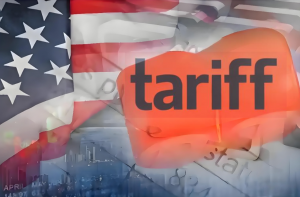www.pengnuochemical.com Shijiazhuang Pengnuo Technology Co., Ltd.
The new tariff list from the Trump administration, like a carefully scripted play, took effect as scheduled on October 1st. 100% tariffs on pharmaceuticals, 50% on building materials, 30% on furniture, 25% on heavy-duty trucks—these figures are less like trade barriers and more like a clear “strategic diagnosis,” precisely pinpointing the industrial soft spots the U.S. intends to protect. For the targeted Chinese manufacturing sector, this is more like an anticipated “extreme pressure test,” accelerating a “value leap” that was already underway.
I. Surface Impact: The Tariff List Reveals Our “Old Coordinates” in the Global Value Chain
In the short term, industries like furniture, building materials, and heavy-duty trucks on the list will undoubtedly face direct export pressure. But this恰恰 confirms a fact: in these fields, Chinese manufacturing,凭借成熟、高效、规模化的供应链 (relying on mature, efficient, and scaled supply chains), has already occupied a “cost and efficiency” coordinate in the global market that is difficult to replace. The U.S. tariffs are, in essence, an acknowledgment of this traditional advantage of ours, and also a coercive attempt to alter these coordinates.
As an upstream industry, the coatings and chemical sector feels the “chill” most directly. But this chill is diagnostic, not destructive. It clearly reveals the structural risks of the past “parasitic” growth model that relied on a single downstream market (such as furniture and building materials exported to the U.S.). The alarm of declining demand is forcibly severing this path dependency.
II. Deep Catalysis: The Transformation from “Supply Chain Dependence” to “Value Chain Dominance”
The truly disruptive changes are happening beneath this pressure test. The adjustments forced upon industries are by no means passive defense, but an active evolution—a leap upstream in the value chain.
Innovation-Driven “Value Substitution”: When the “cost advantage” is partially offset by tariffs, the core of competition inevitably shifts toward “irreplaceable value.” The coatings industry’s accelerated R&D in environmentally friendly, high-performance products is precisely about building new competitive barriers. This is no longer simple “import substitution,” but rather “value export” aimed at the global market (especially high-standard markets). The demand for green products in Europe and Southeast Asia provides a broad stage for us to bypass price wars and engage directly in value competition.
Ecological Integration “Defining New Chains”: The deep connotation of so-called “supply chain localization” is the upgrade of industrial chain collaboration models. Coatings companies providing integrated “coating + application” solutions for domestic furniture and building material manufacturers signifies a role change from “supplier” to “solution partner.” This deep integration is jointly redefining a shorter, smarter, and more agile domestic value chain. The competitiveness of this new chain will stem from innovative collaboration and response speed, not just factor costs.
Strategic Focus on “Internal Circulation Quality”: External pressure forces companies to re-examine the vast domestic market. The focus of competition shifts from the quantitative change of “shifting from export to domestic sales” to how to meet the demand for high-quality, green products driven by domestic industrial upgrading and consumption upgrading. This will significantly enhance the quality and technological content of China’s “internal circulation” system.
III. The Ultimate Vision: From the Resilience of “Made in China” to the Steadfastness of “Created in China”
Therefore, the ultimate impact of this tariff storm is by no means a simple case of “opportunity in crisis,” but rather a forced correction and acceleration of the development logic of Chinese manufacturing. It compels enterprises, capital, and policy to more resolutely channel resources into long-term value areas such as R&D, branding, and sustainable development.
Short-term pain is real, but in the long run, it is catalyzing a crucial transformation for Chinese manufacturing: from relying on “resilience” to survive in the global division of labor, to upgrading towards dominating the restructuring of regional and even global value chains凭借”定力”和”创新” (with “steadfastness” and “innovation”). The tariff list was locked in for October 1st, but what it truly locks in is a new starting point for Chinese manufacturing’s march towards high-value competition.
Shijiazhuang Pengnuo Technology Co., Ltd. was established in 2020. We specializing in the research and development, production and sales of pharmaceutical intermediates and fine chemical products. We have one production plant and one R&D center.
Products:
1,6-Dihydroxynaphthalene CAS: 575-44-0
1,5-Naphthalenedisulfonic acid CAS: 81-04-9
1,5-Dihydroxy naphthalene CAS: 83-56-7
1,3-Dimethylurea CAS: 96-31-1
1,3-Dimethylbarbituric acid CAS: 769-42-6
1,3-Dimethyl-5-pyrazolone CAS: 2749-59-9
Post time: Sep-28-2025


